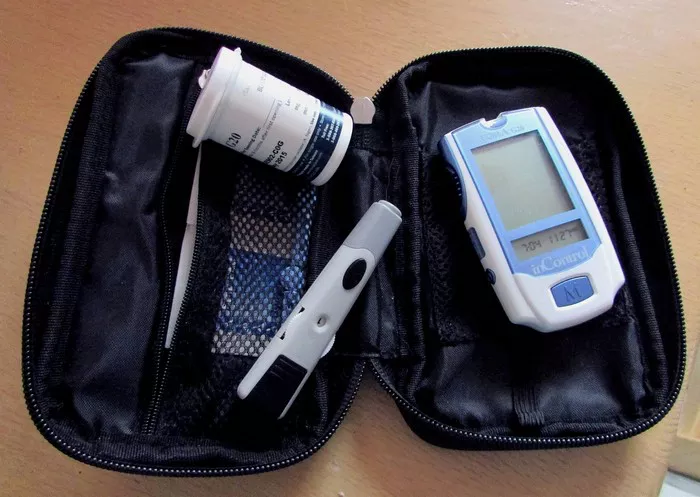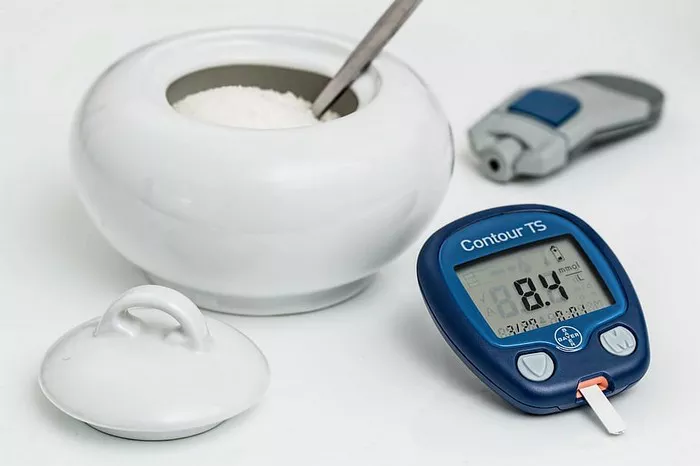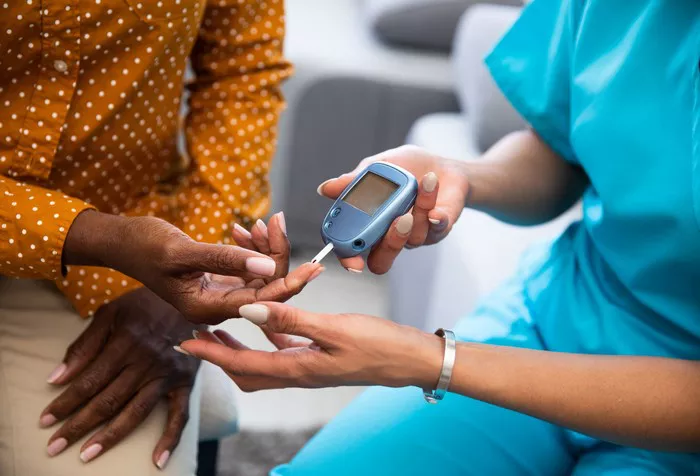Hypoglycemia and diabetes are two interrelated yet distinct medical conditions that affect blood sugar levels in the body. While both conditions involve abnormalities in blood glucose regulation, they differ in their causes, mechanisms, symptoms, diagnosis, and management approaches. In this comprehensive guide, we will delve into the definitions, causes, relationships, symptoms, diagnosis, management, prevention, and distinctions between hypoglycemia and diabetes to provide readers with a thorough understanding of these conditions and how to effectively navigate them.
Definition of Hypoglycemia and Diabetes
Hypoglycemia refers to a medical condition characterized by abnormally low blood sugar levels, typically below 70 milligrams per deciliter (mg/dL). It can occur when the body’s glucose supply is depleted or when insulin levels are too high relative to glucose levels. Symptoms of hypoglycemia may include sweating, shakiness, confusion, weakness, and in severe cases, loss of consciousness or seizures.
Diabetes, on the other hand, is a chronic metabolic disorder characterized by high blood sugar levels resulting from inadequate insulin production, impaired insulin action, or both. Insulin is a hormone produced by the pancreas that helps regulate blood sugar levels by facilitating the uptake of glucose into cells for energy production. In diabetes, the body either does not produce enough insulin (type 1 diabetes) or becomes resistant to the effects of insulin (type 2 diabetes), leading to elevated blood sugar levels over time.
Causes and Mechanisms
The causes and underlying mechanisms of hypoglycemia and diabetes differ significantly. Hypoglycemia often occurs due to factors such as excessive insulin or diabetes medication, inadequate food intake, prolonged physical activity, alcohol consumption, hormonal imbalances, illness or infections, and changes in medication or treatment regimens. These factors can lead to a rapid decrease in blood sugar levels, triggering hypoglycemic symptoms.
In contrast, diabetes involves dysfunction in the body’s ability to regulate blood sugar levels effectively. In type 1 diabetes, the immune system mistakenly attacks and destroys insulin-producing cells in the pancreas, leading to insulin deficiency. Type 2 diabetes, the most common form of diabetes, typically develops due to a combination of genetic predisposition, lifestyle factors (such as obesity and sedentary behavior), and insulin resistance, where the body’s cells become less responsive to insulin’s actions.
Relationship Between Hypoglycemia and Diabetes
While hypoglycemia is often associated with diabetes, it can occur in individuals without diabetes as well. In people with diabetes, hypoglycemia may occur as a side effect of certain diabetes medications (such as insulin or sulfonylureas) or as a result of insulin therapy, especially if insulin doses are too high or if meals are skipped or delayed. However, it’s essential to recognize that not all cases of hypoglycemia are directly related to diabetes.
Non-diabetic individuals can also experience hypoglycemia due to various factors such as diet, medication (e.g., certain antibiotics or antimalarial drugs), hormone imbalances (e.g., adrenal insufficiency), liver disease, kidney disorders, critical illnesses, eating disorders, reactive hypoglycemia, and rare conditions like insulinoma (a tumor of the pancreas that produces excess insulin). Therefore, it’s crucial to differentiate between hypoglycemia caused by diabetes and hypoglycemia resulting from other underlying conditions.
Symptoms and Effects
The symptoms and effects of hypoglycemia and diabetes can vary significantly, highlighting their distinct nature. Hypoglycemia symptoms often manifest rapidly and include sweating, shakiness, palpitations, hunger, confusion, irritability, dizziness, fatigue, headache, blurred vision, and tingling sensations. Severe hypoglycemia can lead to seizures, loss of consciousness, coma, and, if left untreated, death.
In contrast, diabetes symptoms typically develop gradually and may include increased thirst, frequent urination, unexplained weight loss, fatigue, blurred vision, slow wound healing, recurrent infections, and tingling or numbness in the hands or feet. Long-term complications of diabetes can affect various organs and systems in the body, increasing the risk of cardiovascular disease, kidney failure, nerve damage (neuropathy), eye problems (retinopathy), and foot complications.
Diagnosis and Management
Diagnosing and managing hypoglycemia and diabetes require distinct approaches tailored to each condition’s specific characteristics. Hypoglycemia is typically diagnosed through blood sugar testing during episodes of low blood sugar. A blood glucose level below 70 mg/dL confirms hypoglycemia. Continuous glucose monitoring (CGM) devices can also help detect and track blood sugar fluctuations over time.
In contrast, diagnosing diabetes involves various tests, including fasting blood sugar tests, oral glucose tolerance tests, or glycated hemoglobin (HbA1c) tests. These tests measure blood sugar levels under different conditions and provide insights into long-term glucose control. Management strategies for hypoglycemia may include consuming fast-acting carbohydrates (such as glucose tablets, fruit juice, or candy) to raise blood sugar levels quickly, adjusting medication doses, addressing underlying causes (such as adjusting insulin therapy or modifying diet and lifestyle factors), and using glucagon injections in severe cases.
Diabetes management focuses on achieving and maintaining optimal blood sugar control through a combination of lifestyle modifications, medication or insulin therapy, blood sugar monitoring, regular medical check-ups, and education. Treatment goals aim to prevent acute complications (such as hypoglycemia and hyperglycemia) and reduce the risk of long-term complications associated with diabetes. Lifestyle interventions include following a balanced diet, engaging in regular physical activity, maintaining a healthy weight, avoiding tobacco use, moderating alcohol consumption, managing stress, and getting adequate sleep.
Prevention
Preventing hypoglycemia and effectively managing diabetes require proactive measures aimed at maintaining stable blood sugar levels and overall health. Individuals with diabetes can reduce the risk of hypoglycemia by following a regular meal schedule with balanced carbohydrate intake, monitoring blood sugar levels regularly, adjusting medication doses as needed (under healthcare provider guidance), and being prepared with fast-acting carbohydrates to treat hypoglycemic episodes promptly.
Moreover, managing diabetes effectively involves adopting a holistic approach that encompasses nutrition, physical activity, medication adherence, blood sugar monitoring, stress management, regular medical follow-ups, and ongoing education. Lifestyle modifications, such as consuming a healthy diet rich in fruits, vegetables, whole grains, lean proteins, and healthy fats, engaging in regular exercise (e.g., aerobic activity, strength training, flexibility exercises), monitoring blood sugar levels as recommended by healthcare providers, taking medications or insulin as prescribed, and attending diabetes education programs or support groups, can help individuals with diabetes achieve and maintain optimal blood sugar control and overall well-being.
Conclusion
Hypoglycemia and diabetes are complex medical conditions with distinct characteristics that require careful attention, understanding, and management. While hypoglycemia refers to low blood sugar levels, typically below 70 mg/dL, diabetes is characterized by high blood sugar levels due to insufficient insulin production or insulin resistance. Understanding the causes, mechanisms, symptoms, diagnosis, management, and prevention strategies for hypoglycemia and diabetes is essential for effectively navigating these conditions and maintaining optimal health.
Related Topics:
What Are The Signs And Symptoms Of Hypoglycemia?

























